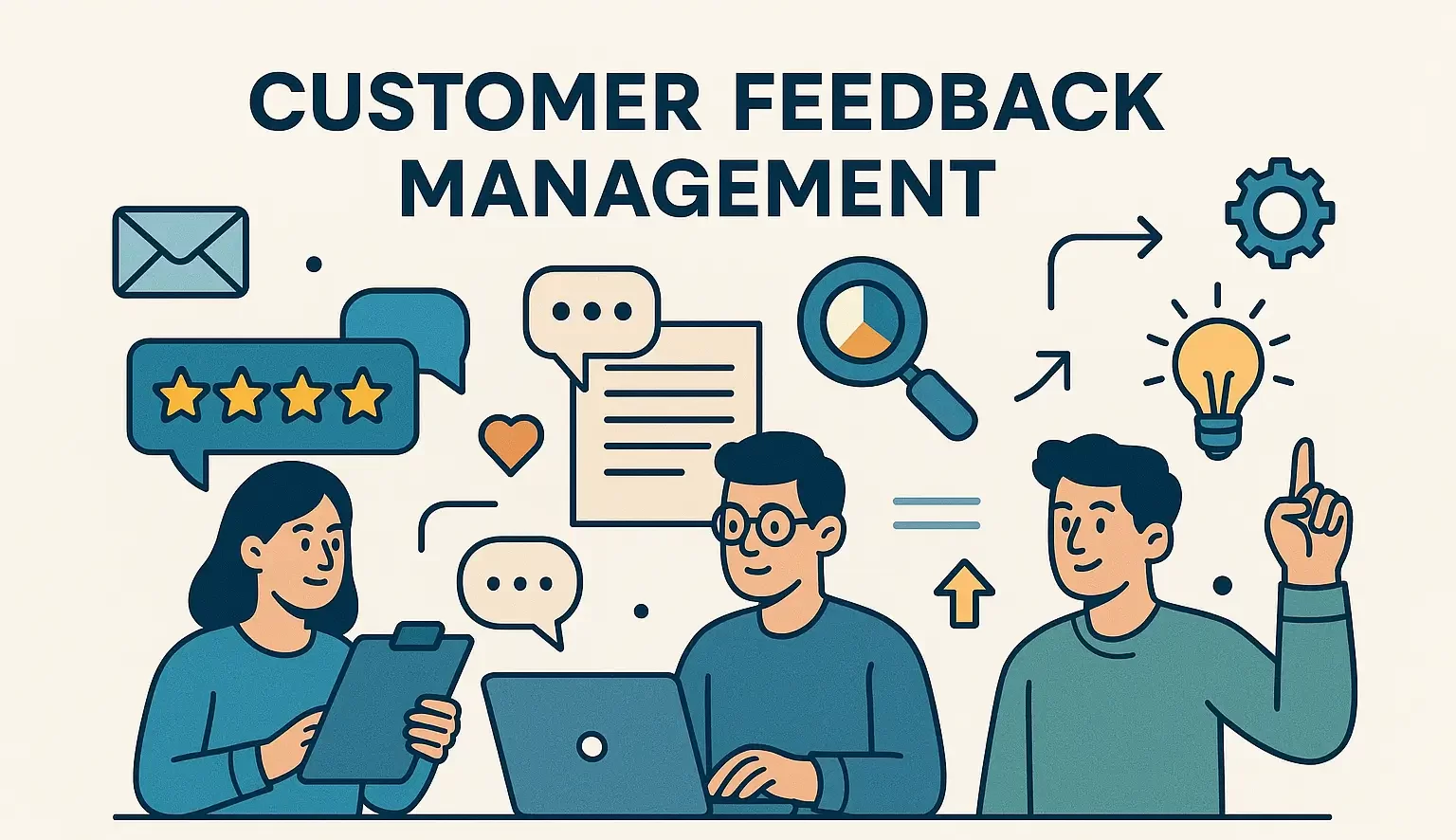Every customer interaction tells a story. But unless you systematically gather and act on their feedback, valuable insights can slip through the cracks—and with them, your competitive edge. Customer Feedback Management (CFM) is a critical process for systematically collecting, integrating, understanding, and acting on customer feedback to improve products, services, and overall customer experience. In today’s customer-centric business landscape, understanding and addressing customer needs is more vital than ever. Studies reveal that a significant majority of customers expect businesses to adapt to their evolving needs and preferences.
According to a Salesforce study, 88% of customers say the experience a company provides is as important as its products or services [source]. This underscores the urgency for a robust Customer Feedback Management strategy that turns feedback into a growth engine.
What is Customer Feedback Management?

Customer Feedback Management involves a structured approach to collecting and leveraging customer insights throughout the entire customer lifecycle. It encompasses gathering feedback through various channels, analyzing it to identify trends and areas for improvement, and implementing changes based on these insights. By effectively managing customer feedback across the lifecycle, businesses can enhance their products, customer experience, and customer service operations, ultimately leading to improved customer satisfaction.
Key components of Customer Feedback Management include:
- Collect: Gathering feedback through surveys, reviews, direct interactions, and unsolicited comments on social media and review sites.
- Integrate: Capturing this feedback within your CRM ensures it’s tied to customer profiles for a complete view of every interaction.
- Understand: Reviewing feedback to identify trends and areas for improvement. Integrated CRM data enhances analysis by allowing businesses to segment insights by customer type, account size, lifecycle stage, and more.
- Act: Implementing changes and improvements in response to feedback. With CRM integration, feedback-driven actions—such as follow-ups, case escalations, or success check-ins—can be automatically triggered based on real-time customer insights.
Benefits of Customer Feedback Management
Implementing a comprehensive Customer feedback management system offers numerous advantages:
- Higher Customer Satisfaction: 70% of customers say a company’s understanding of their needs influences their loyalty [PwC].
- Higher Customer Retention: Responding to feedback demonstrates excellent customer service, making customers more likely to make repeat purchases.
- Lower Customer Churn: Engaging with customers and acting on their feedback helps retain customers who might otherwise leave.
- Better Products and Services: Customer feedback helps businesses identify weaknesses and develop stronger product offerings.
- Enhanced Brand Reputation: Listening to feedback shows customers that their opinions are valued, fostering positive word-of-mouth and enhancing brand reputation. Responding to feedback boosts trust—93% of customers are more likely to return to a company that provides excellent service [HubSpot].
Types of Customer Feedback
Understanding the forms of feedback helps optimize your Customer feedback management approach
| Type | Description |
|---|---|
| Direct Feedback | Surveys, support tickets, direct emails |
| Indirect Feedback | Online reviews, social media, app store ratings |
| Quantitative | Metrics like CSAT, CES, NPS |
| Qualitative | Open-ended responses, verbatim comments |
How to Create an Effective Customer Feedback Management System
Creating an effective Customer feedback management system involves several key steps:
- Define Objectives: Clearly outline what you want to achieve with your Customer feedback management efforts.
- Choose Collection Methods: Determine which methods you’ll use to collect feedback, such as surveys, focus groups, or interviews.
- Automate: Implement Customer Feedback Software solutions to automate feedback collection and analysis.
- Train Your Team: Provide your team with a clear process to follow when addressing customer feedback.
- Take Action: Act on the insights gained from customer feedback to resolve issues and implement improvements.
- Monitor Results: Regularly review your results to pinpoint areas for improvement and measure the impact of your changes.
Best Practices for Customer Feedback Management
- Be Timely: Collect customer feedback shortly after a service interaction to ensure relevance and accuracy.
- Utilize Automation and AI: Employ automated, AI-powered surveys to streamline the collection process.
- Survey Across Channels: Deploy surveys on every service channel to gain insights from all customer touchpoints.
- Unify Feedback with CRM Data: Integrate feedback data with CRM data to gain a comprehensive view of the customer journey.
- Review Service Dashboards: Use pre-built Customer feedback management reports and dashboards to monitor key metrics.
Common Issues with Feedback Collection
| Problem | Solution |
|---|---|
| Low Response Rates | Keep surveys under 2 minutes and have personalize asks. Incentives to fill-out the surveys also help. |
| Data Overload | Use AI to cluster themes and prioritize high-impact issues. |
| Biased Responses | Randomize questions, avoid leading language, and include diverse segments. |
| Implementation Gaps | Assign feedback themes to specific teams for follow-through. |
Choosing the Right Feedback Management Software
Here’s what to consider when selecting Customer Feedback Software:
| Features | Why It Matters |
|---|---|
| Ease of Use | Faster adoption across teams |
| CRM Integration | Link feedback to customer profiles |
| Scalability | Supports growth without tech bottlenecks |
| Advanced Analytics | Enables real-time insights and trend detection |
| Customization | Tailor surveys and dashboards by department or persona |
| ROI Focus | Quantify impact on churn, NPS, and retention |
| Support & Training | Ensures continuous improvement and staff enablement |
Pro Tip: SurveyVista offers built-in integrations with Salesforce, HubSpot, and Zendesk, and includes AI-powered feedback tagging, real-time dashboards, and automated follow-ups—making it a powerful Customer Feedback Software solution.
Final Thoughts
Businesses that treat feedback as a strategic asset—rather than just a compliance checkbox—are best positioned to win customer loyalty, improve retention, and accelerate product innovation.
“If you don’t listen to your customers, someone else will.” — Jeff Bezos
With SurveyVista, you can turn every interaction into actionable insight and build a truly responsive customer experience through smart Customer Feedback Management.
Ready to turn feedback into a growth engine? Get started with SurveyVista and build a smarter, more responsive customer experience. Book a call with our Feedback Management Experts today.
More Like This

Rajesh Unadkat 
Founder and CEO
Rajesh is the visionary leader at the helm of SurveyVista. With a profound vision for the transformative potential of survey solutions, he founded the company in 2020. Rajesh's unwavering commitment to harnessing the power of data-driven insights has led to SurveyVista's rapid evolution as an industry leader.
Connect with Rajesh on LinkedIn to stay updated on the latest insights into the world of survey solutions for customer and employee experience management.



